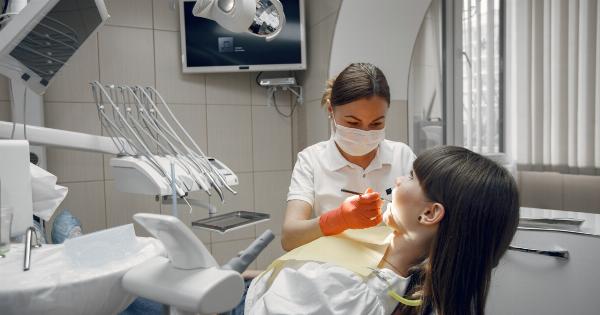Breast cancer is one of the most common types of cancer that affects women all around the globe. According to data provided by the World Health Organization, breast cancer is the second most common type of cancer after lung cancer.
Early detection of breast cancer is crucial in ensuring successful treatment and recovery of patients. However, sometimes it can be difficult to diagnose breast cancer due to insufficient tumors found in patients.
In this article, we will discuss why insufficient tumors are found in 30% of breast cancer patients and what are the implications of this for their treatment and recovery.
Understanding Insufficient Tumors in Breast Cancer
For most cancers, the presence of a tumor is the key indicator of the disease. In breast cancer, the tumor is formed when a group of harmful cells grow in the breast tissue.
In some cases, the tumor can be detected early due to visible symptoms like a lump or changes in breast shape or size. However, in some cases, the tumor may be too small to be detected by imaging tests like mammography or ultrasound. This means that there may be insufficient tumors found in breast cancer patients.
Research has shown that up to 30% of breast cancer patients have insufficient tumors that make it difficult to diagnose and treat the disease.
One of the main reasons for insufficient tumors is the presence of ductal carcinoma in situ (DCIS), which is a type of breast cancer that develops within the milk ducts of the breast. DCIS is considered a pre-cancerous condition because it has not yet spread to the surrounding tissue. However, it can increase the risk of developing invasive breast cancer in the future.
DCIS is difficult to diagnose because it does not always present as a lump. It can be detected through mammography or ultrasound, but it is not always visible in these imaging tests.
This means that women with DCIS may be at risk of developing invasive breast cancer even if they have no visible symptoms. In addition, DCIS can be difficult to treat because it is not yet invasive, so surgery may not always be necessary.
Instead, patients may be advised to undergo regular mammograms and take preventive measures to reduce their risk of further developing the disease.
In addition to DCIS, insufficient tumors can also be caused by other factors like the location of the tumor, the size of the breast, and the type of breast tissue.
For example, tumors located in the deep tissue of the breast may be more difficult to detect than those located closer to the skin. Similarly, women with dense breast tissue may be more likely to have insufficient tumors because the dense tissue can hide the tumors from imaging tests.
Implications of Insufficient Tumors in Breast Cancer
Insufficient tumors in breast cancer can have several implications for the treatment and recovery of patients. For one, it can delay the diagnosis of the disease and result in a longer period of uncertainty and anxiety for patients.
It can also lead to incorrect diagnoses or misdiagnoses of the disease, which can lead to inappropriate treatment or delay in treatment.
Another implication of insufficient tumors is that it can affect the type of treatment options available for patients.
For example, if the tumor is not visible in imaging tests, doctors may not be able to accurately determine the stage and extent of the disease. This can affect the type of surgery required to remove the tumor, as well as the need for radiation therapy or chemotherapy.
Moreover, insufficient tumors can limit the effectiveness of targeted therapies that are designed to specifically target cancer cells.
This is because without a visible tumor, it is difficult to determine the exact location and type of cancer cells that need to be targeted. This can result in less effective treatment and a higher risk of the disease returning or spreading to other parts of the body.
Treatment Options for Patients with Insufficient Tumors
There are several treatment options available for patients with insufficient tumors in breast cancer, depending on the stage and extent of the disease. Some of these options include:.
- Active surveillance: Patients with DCIS may be advised to undergo active surveillance, which involves regular mammography and check-ups to monitor the growth and progression of the disease.
- Surgery: Depending on the size and location of the tumor, surgery may still be an option for some patients. This may involve removing the tumor as well as some healthy tissue around it to ensure that all cancer cells are removed.
- Radiation therapy: This type of therapy uses high-energy radiation to destroy cancer cells. It may be recommended after surgery to ensure that all cancer cells are killed and reduce the risk of recurrence.
- Chemotherapy: This type of therapy involves the use of powerful drugs to kill cancer cells. It may be recommended if the cancer has spread to other parts of the body or if the tumor cannot be removed through surgery.
Preventive Measures to Reduce the Risk of Insufficient Tumors
There are several preventive measures that women can take to reduce the risk of developing insufficient tumors in breast cancer. Some of these measures include:.
- Regular mammograms: Women over the age of 50 are advised to undergo regular mammograms to screen for breast cancer. Regular screenings can help detect the disease early and ensure timely treatment.
- Breast self-examination: Women can also perform monthly breast self-examinations to check for any changes or abnormalities in breast tissue. This can help detect the disease early and increase the chances of successful treatment.
- Healthy lifestyle: Maintaining a healthy lifestyle that includes regular exercise, a balanced diet, and limited alcohol intake can help reduce the risk of breast cancer.
- Breastfeeding: Women who breastfeed their children may have a lower risk of developing breast cancer due to the natural hormonal changes that occur during lactation.
Conclusion
Breast cancer is a serious disease that can have significant implications for the health and wellbeing of patients. Insufficient tumors in breast cancer are a challenge that affects up to 30% of patients.
Understanding the causes and implications of insufficient tumors is important in ensuring appropriate diagnosis and treatment of the disease. Patients with insufficient tumors may still have several treatment options available, including surgery, radiation therapy, and chemotherapy.
However, taking preventive measures like regular mammograms, breast self-examination, and leading a healthy lifestyle can help reduce the risk of developing the disease and ensure early detection and treatment.





























